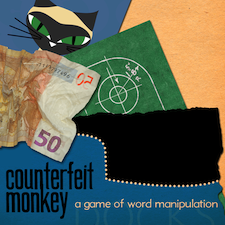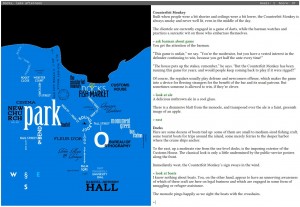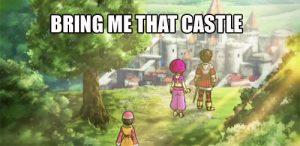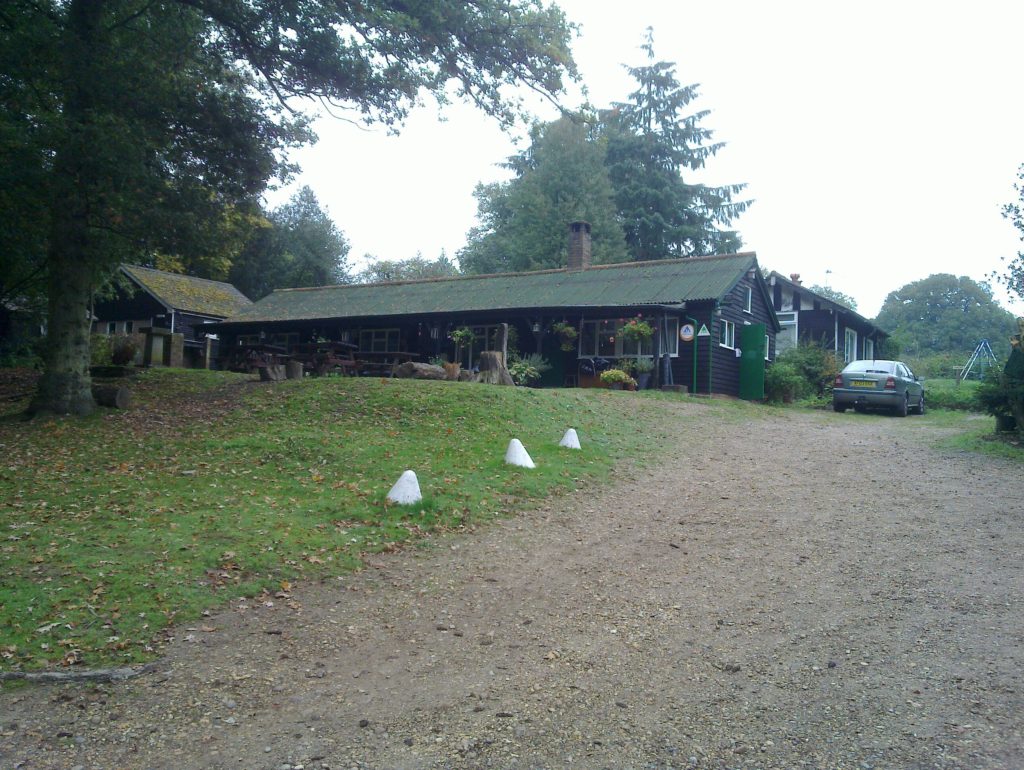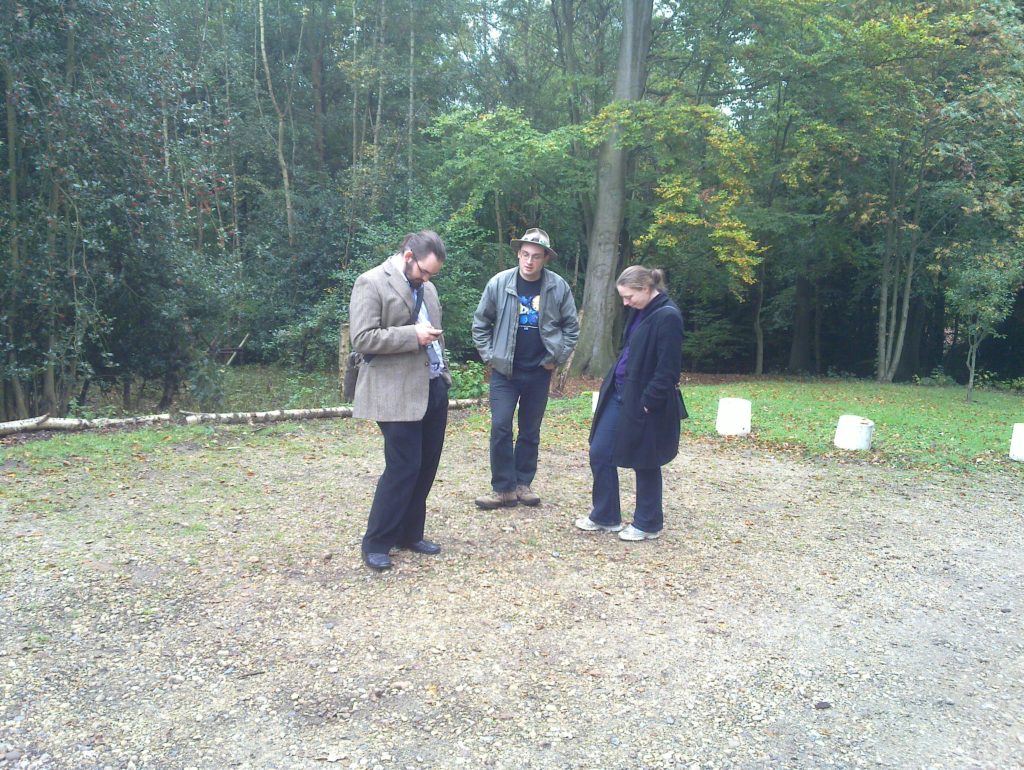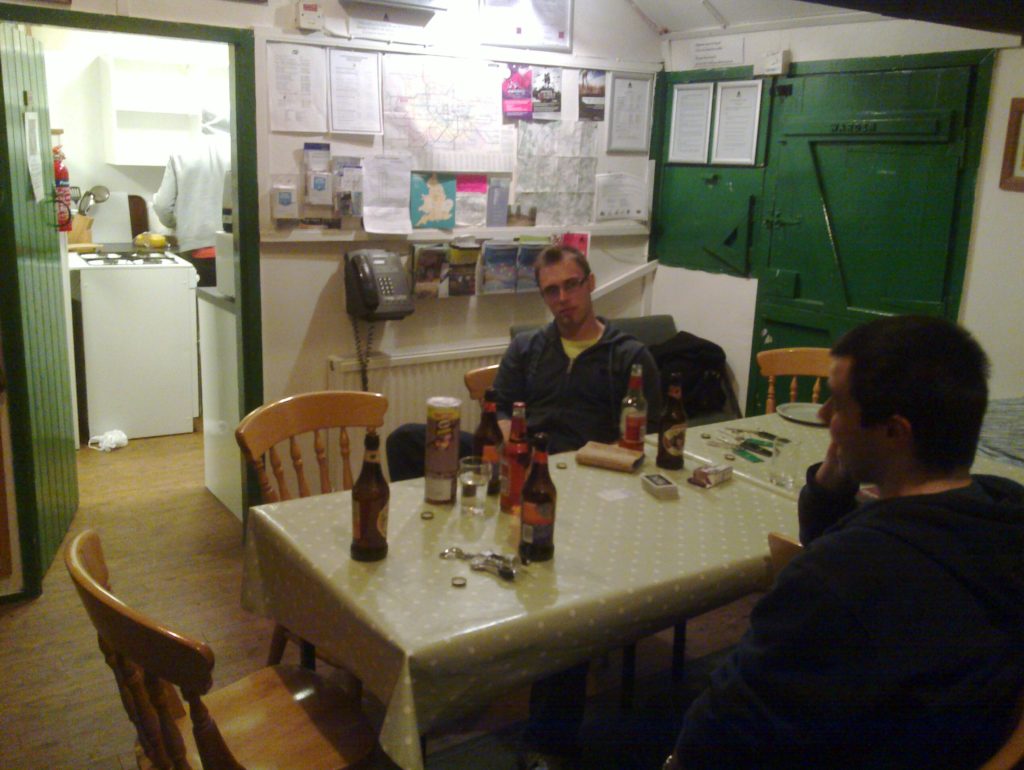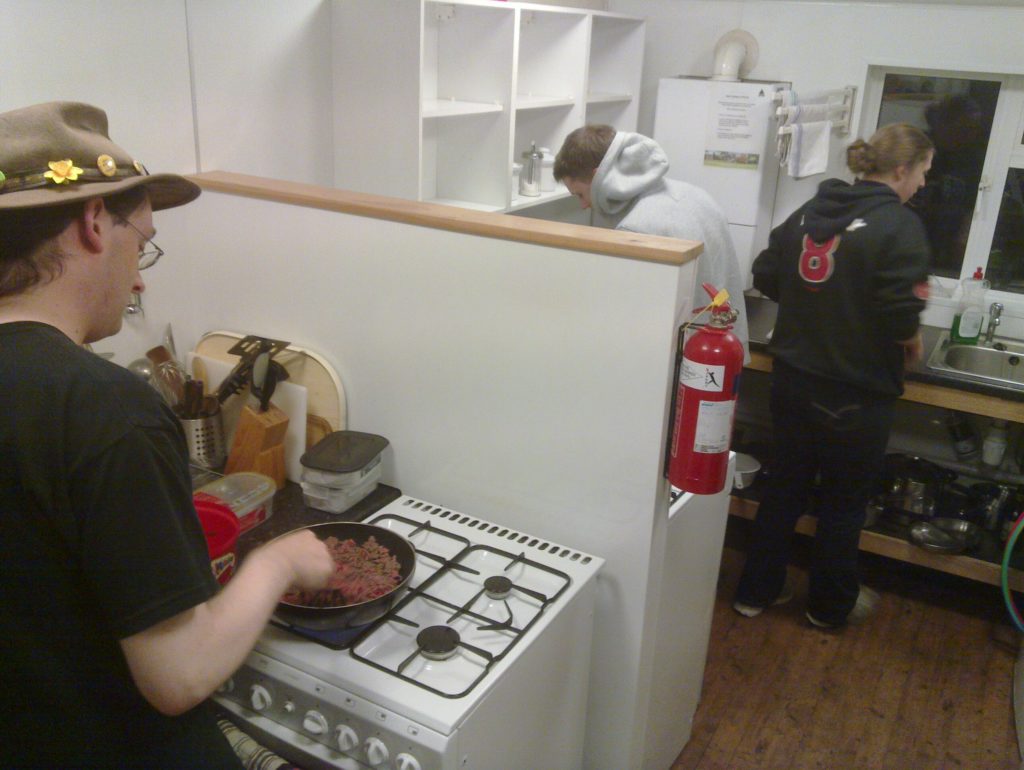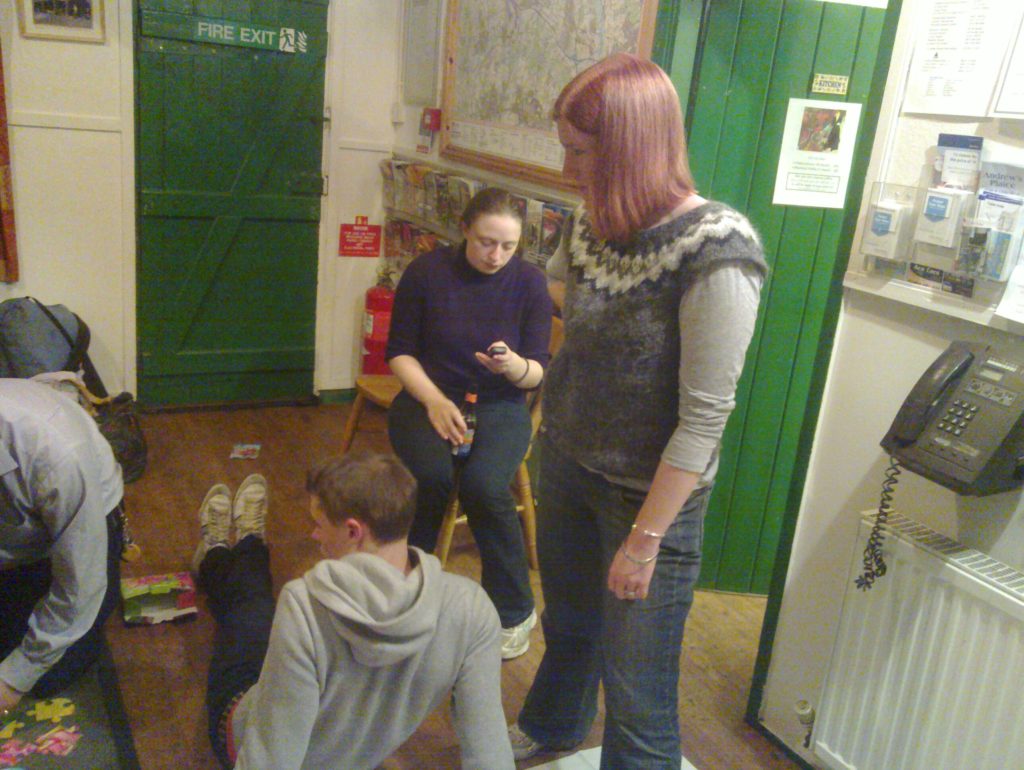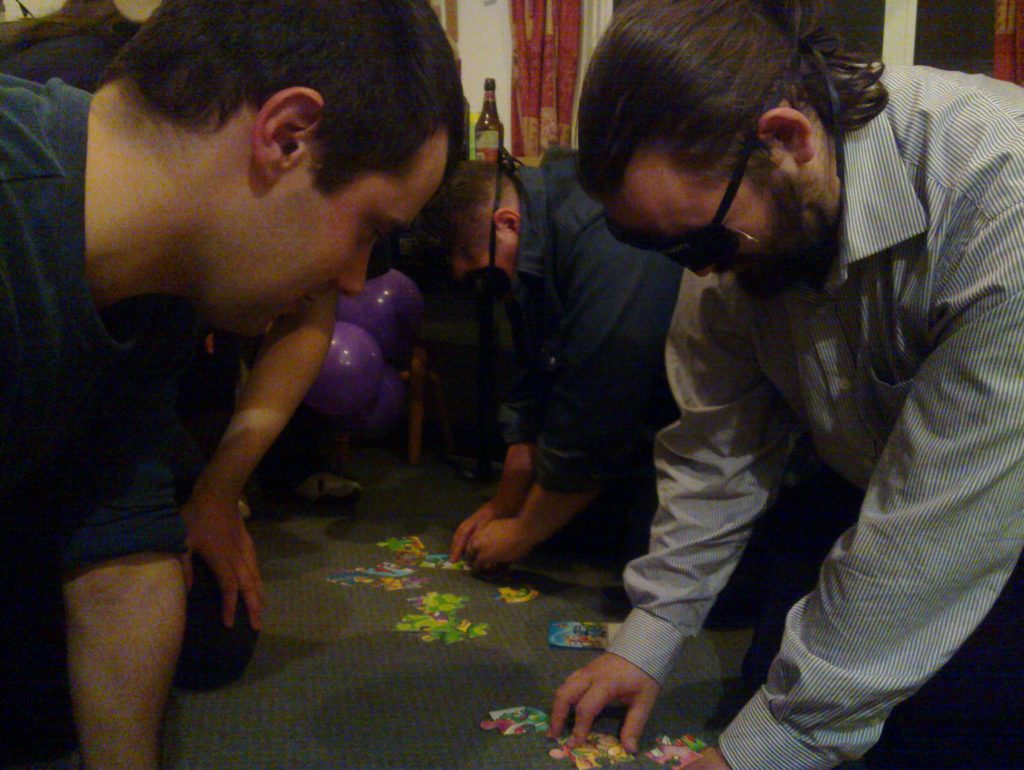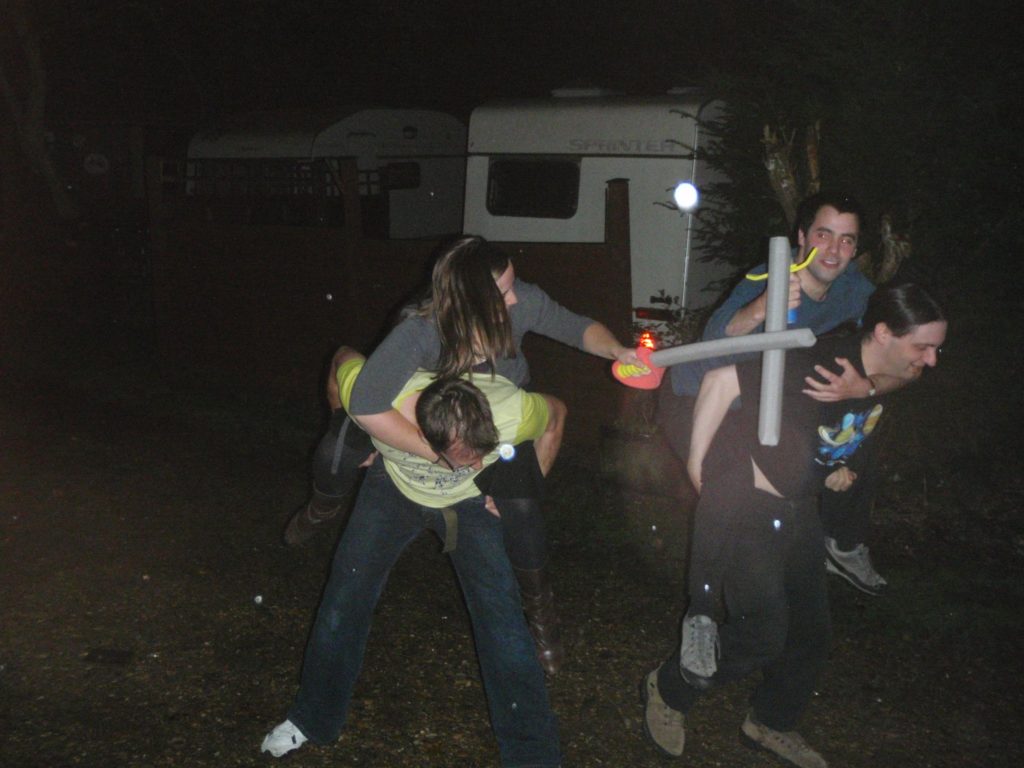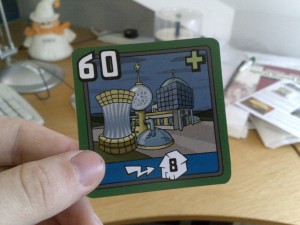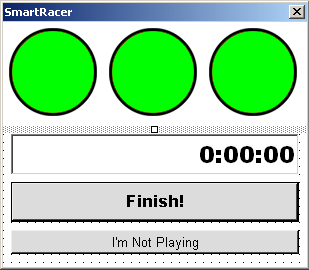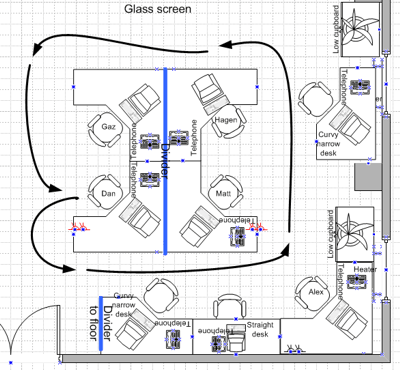This post should have appeared on Monday 24th March 2008, but owing to technical difficulties didn’t make it online until Thursday 27th. Sorry!
Like many others, I’ve had both Good Friday and Easter Monday off work, and as I haven’t blogged enough recently, I thought I ought to provide a quick update about the things I’ve been
up to:
Aberystwyth Goes Silent
Okay, so that happens about this time every year: the last week has been the usual lull between the disappearance of the majority of the students and the appearance of the Easter
weekend tourists. But this year it was particularly quiet, because even many of the people I’d sort-of expected to be around are elsewhere: Matt‘s still in Cornwall, Sarah‘s
also absent, and of course Ruth and JTA are away on a skiing holiday with Gareth and Penny. So it’s been even quieter than we’re used to at this time of year.
Bedroom Tidy-Up
It’s been long overdue, but anybody who ever went into Claire and I’s bedroom at The Cottage will know that it contained bags of clothes that
we’d never got around to unpacking since we moved in, over a year ago. So, I finally unpacked them: many of them right into other bags which made their way to the nearest charity shop.
Why do I share this with you? Well, because it leads to an interesting guessing game. You know how Claire pretty much never, ever wears a dress or a skirt (and makes a point of
mentioning this to people). Well, having unpacked/washed/sorted/re-hung all of her clothes, take a guess at the exact number of skirts and dresses (total) that she owns. I’ll reveal the
actual figure (assuming there aren’t any I’m yet to discover in the final bag) a little further down.
Troma Night Lite Ultralite
Pretty much every Saturday for about four years, we’ve held Troma Night, our film night of the best and the worst films ever made, and, over
the years, it’s gathered a number of interesting traditions. One such tradition is that it only counts as a Troma Night if there are four people present. That’s fine and dandy,
and there have been a number of three-man Troma Nights, which we’ve instead called Troma Lite. But this Saturday was the first ever (that I’m aware of) Troma Night with only two people
present.
That’s right: only Claire and I were there. We’ve now dubbed this event Troma Ultralite – a Troma Night with only two people present. So we (re-)watched the RiffTrax‘d version of Raiders of the Lost Ark, followed by Watership Down, which I hadn’t seen since I was a small child (it gave me nightmares, I seem to remember).
(A Very Small) Geek Night
Yesterday brought us a Geek Night, of course, hosted by Rory, but only he, Claire, Paul and
I were present, and Paul had to disappear before then end because unlike the rest of us, he’s still working his usual crazy number of hours this Easter weekend. Unlike last week, when I
played like a complete moron, I rocked last night and thoroughly trounced everybody, which I shan’t be letting them forget for a while. Well, until next week.
Turning Point: Fall Of Liberty
I got hold of a copy of Turning Point: Fall Of Liberty, a new video game, and played through it
this afternoon. In it’s favour, it’s a very clever idea for a game. Apparently, in 1931, Winston Churchill was hit by a taxi
cab while in New York, which gave him a characteristic limp for the remainder of his life. In the game’s alternate-history universe, this accident killed him, and he never went on to
lead Great Britain during the Second World War. In 1940, Britain surrenders and comes under the occupation of Nazi Germany, who never forge a wartime alliance with Japan against the
United States, and do not turn their sights on Russia.
We’ve seen this kind of thing before, of course. The time travel of the Command & Conquer: Red Alert series of games played the idea to death (of course, they instead had a young Adolf
Hitler killed, but the principle is similar). But there’s something quite well-executed about this particular alternate history. In 1953, Greater Germany and Japan launch a combined surprise attack against the United States, capture key cities on the Atlantic and
Pacific coasts, and force the President and Vice-President to step down so that they can replace them with a “puppet President” during the first part of the occupation.
The game plays as a first-person shooter: the player’s character is a New York construction worker who for some reason is highly proficient with a huge variety of firearms and can
withstand several simultaneous bullets to the chest time and time again without dying. The game opens as bomber and paratrooper blimps, accompanied by bomber wings, attack New York, and
it’s here that you really see how beautiful the game can be. The draw distance is fantastic: you can see the distant planes passing over Liberty Island as they get closer and closer
until eventually they’re strafing the buildings you’re above. And so your adventure begins.
Unfortunatley, it is – at heart – a console game, for the Xbox 360, and it shows. The controls are somewhat clunky and ill-described (and why oh-why are you forbidden from using the
mouse to navigate the menus?), the aim “assist” that’s so essential on most console shooters feels out-of-place when you’re playing with a nice accurate mouse, and it’s impossible to
save the game except when you pass a “checkpoint.” Worse yet, these checkpoints get further and further apart as the game goes on, as if the developers couldn’t think of how to make the
game challenging any more so they just made it more frustrating: here’s a clue – doing the same thing over and over isn’t challenging, but it is boring. They’ve tried to make it not
feel exactly like Half-Life 2 (even some of the scenes seem to be copied directly from the game, like the Tower Bridge mission) by adding in the “plant a bomb” minigame, but this is
about as challenging as picking your nose: all you have to do is press the appropriate coloured buttons in order. There isn’t even a time limit to doing so – at least not one that I
ever found.
The middle of the game draws on and somehow skips over the key elements of the story, which could otherwise have been fascinating. Perhaps I’m looking at the “wrong” things, but I’d
really like to have seen more of the politics, the formation of the resistance movement, and the German propoganda slowly appearing on the walls of the city. Oh, and the civilians!
Where do they all disappear to? When they’re not part of the plot, they disappear after the first chapter never to be seen again.
And then the end brings it all back again – those huge draw distances, those beautiful wide fight scenes, and the (really cool) blimps (including a fucking flying aircraft
carrier – how cool is that?). It’s a bit easy at the beginning but it makes up for that by being really quite hard towards the end, except for the very final scene which was a bit
peasy (although I don’t think the level designers expected me to have saved myself an anti-tank rocket launcher and a dozen rockets from way earlier in the level, the use of which was
my entire strategy for defeating the Third Reich).
So, in summary: it’s a good way to waste an afternoon if you “do” WWII first person shooters, and you’re interested in alternative history, AND you can put up with the
fact that this is, in the end, a console shoot-em-up that’s been half-heartedly ported to the PC.
Fire! On The Beach!
Not-gay Gareth’s free tonight for the first time in ages, so he and Paul have organised that we’ll be having a fire on North Beach tonight when Ruth and JTA get back into town (or maybe
starting a little before then). There’ll be a barbeque, so if you’ve got anything to grill, bring it along. It’s on Abnib Events, of course, as
well (which I fixed last week and is now working properly again – sorry about that!).
So, How Many Skirts And Dresses?
And the answer to the earlier question? 24. Yes, 24 skirts and dresses are now hanging in the wardrobe of a woman who never ever wears any of them. How did this happen? I’ve known
Claire for six years, and I’m not sure I can count 24 times I’ve ever seen her in a skirt, never mind some of the things in her wardrobe which I’ve never seen before in my
life. How does she manage it?
A Comment From Thailand
Oh yeah, and you’ll remember a while back I blogged about a postcard from Jimmy in Thailand. Well, it turns out that somebody
from Thailand (allegedly, at least) found the page and corrected his spelling of the name of the island he was on, in a comment on this blog.
Right; that was longer than it should have been. I’ll try to be less of a sloppy blogger.

